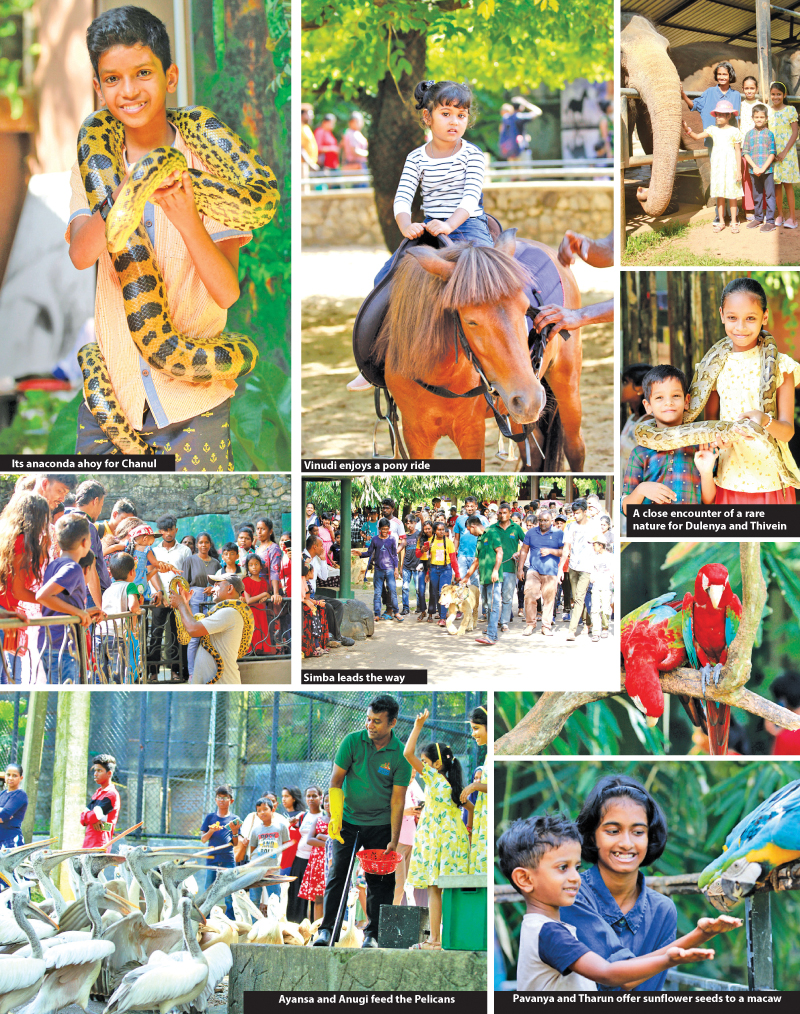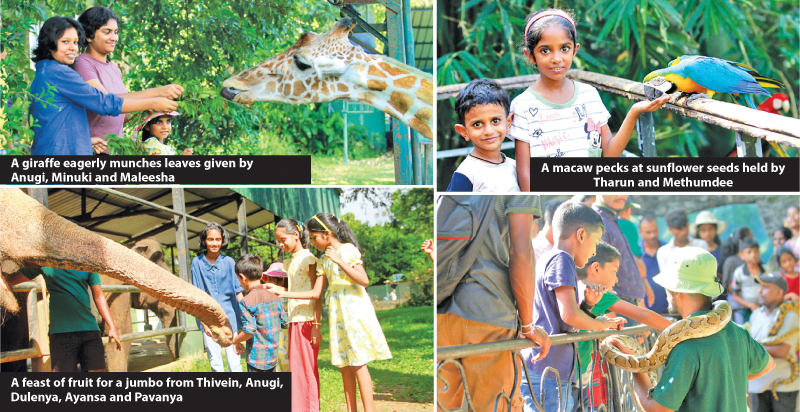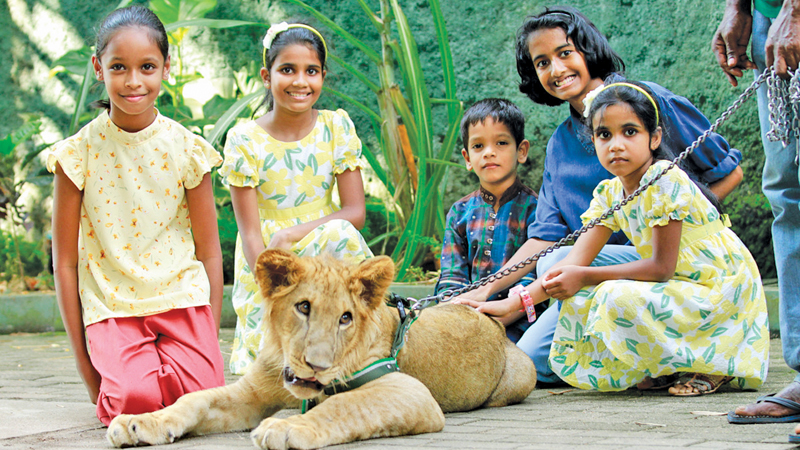The Zoological Gardens at Dehiwala (the Zoo) has a program of feeding selected animals and birds on Friday, Saturday and Sunday afternoons, from about 1.30 p.m. For the payment of a fee visitors can feed pelicans, giraffes macaws and elephants. The food is provided by the zoo.
Tilapia tidbits
A crowd of pelicans, their harsh, raucous cries reverberating in the still air waited impatiently to be fed. As the zoo keepers and the children and adults waiting to feed them picked up morsels of tilapia many beaks opened wide in unison. A truly amazing sight!
A few of the children seemed a bit nervous at first but they soon got the hang of it and enthusiastically fed the hungry birds.
According to the Zoo’s Development Officer, Shemal Samaranayake and Field Assistant, Chaminda the pelicans come from all over Colombo and its environs to the Zoo for their meal of fresh water tilapia.
After eating their fill the pelicans fly back to their nesting places. However, Samaranayake said, a few pelicans generally stay back especially if they are sick.
Macaws screech for supper
The Dehiwala Zoo’s aviary was a buzz with excited macaws flying around flapping their wings and screeching for their supper of sunflower seeds. Eager children held out palms full of seeds and the macaws swooped down to eat the seeds their vibrantly hued wing of red, green blue and yellow making bright coloured splashes in the air.
Some birds sat on the railings or walked on the railings with children following them and offering the seeds. Now and again there were disputes among the birds with their screeching escalating in tone and volume.
Delicacies of fruit and leaves
It was also meal time for the tall legged, long necked giraffes at the Zoo. They were fed with fruit, ambarella and ipil ipil leaves. Excited children thronged near the parapet wall surrounding the giraffes’ enclosure carrying leaves and fruit eagerly awaiting their turn to feed the animals.
The giraffes easily put their heads over the wall and took their fruits and leaves.
A fruit fiesta
The mighty and majestic elephants too are included in the feeding program. Pineapples, bananas and sugar-cane are among the fruits given to the elephants.
They too eagerly awaited their fruits and lumbered to get them from the children.
A rare close encounter
Visitors can have a close encounter with an anaconda or a python on the payment of a fee. Adults and children enthusiastically took this chance to hold or wrap the reptiles around themselves. Pony rides are another attraction at the Zoo.
Update on Simba
Remember, the lion cub Simba? Junior Observer featured him when he was six months old. Now, at 10 months Simba is much bigger and is on the fast track to become a young adult male. He eats four kilos of meat per day.
He still is a star attraction and we spotted him walking followed by an admiring entourage as usual. He however, was unfazed by them.
Pix: Dushmantha Mayadunne
****
History
The Dehiwala Zoological Gardens was set up by John Hagenbeck, a German national in 1905 in a five-acre land.
It was meant as a temporary holding ground for elephants to be exported to Hamburg, Germany.
With time, many locals visited the place. After a while, the Zoo was expanded to 11 acres and the ‘Ceylon Zoological Gardens Company was established in 1926.
At the start of the second World War in 1933 the company was taken over by the British Government and during the war around 1935, the company went bankrupt due to its inability to sustain the growing number of animals.
During this time, Major Aubry N. Weinman who was an animal lover pleaded with the British Government for the company to be made a Department.
As a result, the Government took over the administration of the company on July 3, 1936 and the area was expanded to 23 acres.
It was established as an Independent State Department in 1946 and later named as the ‘Department of National Zoological Gardens’.
At present, the department consists of four ex-situ conservation operational units namely: Dehiwala Zoo, Pinnawala Elephant Orphanage, Pinnawala Zoo and Ridiyagama Safari Park.
Apart from these, the Gonapola farm, Kahapola farm and the Diyagama farm produce animal feed.






